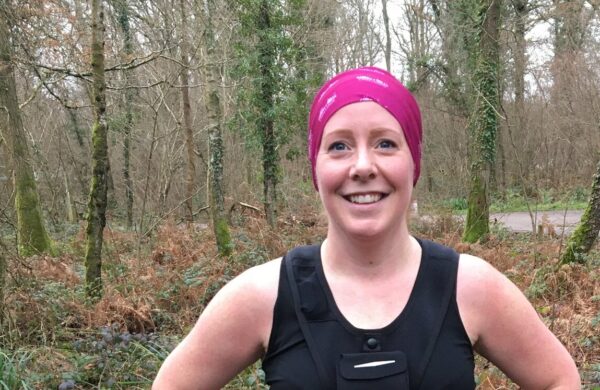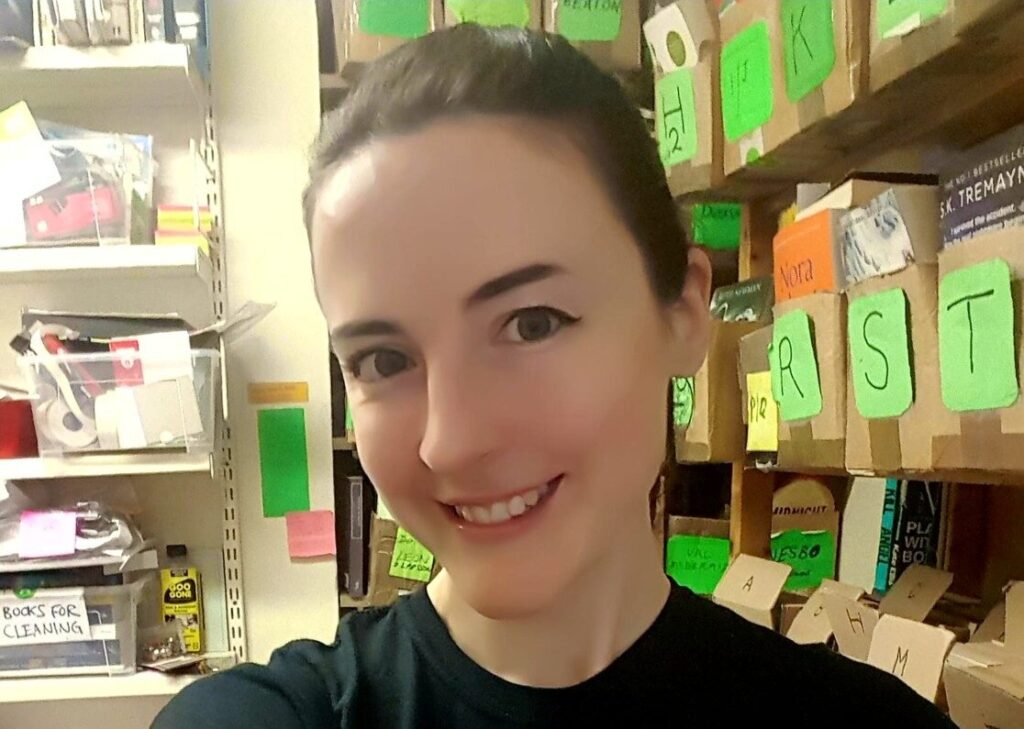
Locked down with my husband, 4 dogs and anxiety
Nancy shares how exercising in lockdown has helped her anxiety.
Date: 26 June 2020 Author: Energise Me
Kate from Southampton opens up about her relationship with physical activity and how it has played a part in overcoming difficult hurdles.

When I was a kid, I used to swim three times a week. I’ve had anxiety issues since I was little, so I’d often get nervous before a swim class. The coaches pushed us hard because they wanted us to get to competition level eventually. I never knew if they’d be sending us down to the bottom of the deep end to fetch rubber bricks for a training exercise (my least favourite activity!)
But it always left me feeling energised and happy afterwards. I also used to walk a lot with my family, as we had a German Shepherd dog who needed long walks every day. I taught myself to ride a bike when I was nine. There was a rusty old bike in the shed and I rode it round and round our small garden until I was good enough to head out onto the road.
I’m a big believer that how we see ourselves is based on the things we spend our time doing. So someone is more likely to say “I’m a keen gardener” than “I do lots of gardening” when you ask about their hobbies. ‘I am’, not ‘I do’. As a kid, I would have said “I’m sporty… I’m a swimmer… I’m an active person”.
I went from being only a little anxious to being very withdrawn. I stopped playing outdoors and spent more time at home on the computer or reading.
Things changed when I started secondary school. My swim coach decided I was ready to move up to competition level, which meant early morning classes. I was already feeling anxious about starting a new school and asked my mum if I could quit swimming. She said yes straight away – she was busy and I think it was easier for her not to have to organise an extra thing.
“Big school” was a shock to me and I went from being only a little anxious to being very withdrawn. I stopped playing outdoors and spent more time at home on the computer or reading. I began to lose a big part of my self-identity as a sporty, active person.
When I was 13, my father died. He’d had some health issues and that had affected us as a family, so we’d already stopped communicating and spending as much time together. His death was unexpected and sadly we didn’t know how to come together and support each other afterwards.
I developed an eating disorder and no longer had the energy or desire to exercise. I also dropped out of mainstream education, due to school phobia. The local authorities sent me to an alternative education unit for kids with mental health issues. I spent the rest of my time reading, watching TV or using the computer. Somehow, I forgot how much I used to love cycling, swimming, and walking for miles.
This didn’t change until my mid-20s. I was still very inactive, apart from a bit of walking. Now and then I’d go for a long walk to take the edge off my anxiety and depression. I’d gotten over the worst of my eating disorder, but was still underweight and had lost a lot of muscle tone from my bad diet and lack of exercise.
Then, I started a new relationship and found that my boyfriend loved to walk. We started going hiking together and often wild-camped – something I’d never done before. He got me back into cycling and we built up to longer and longer trips together. I was very proud of myself on the day I cycled 60 miles!
I was still struggling with anxiety and depression, but learning that eating properly and getting moving made a huge difference to my mood. We had friends who were into climbing, so I gave that a try too and discovered I loved the challenge of looking for handholds and footholds. Every time I tried something new, I got back some of the physical confidence and identity I thought I’d lost as a child.
I was still struggling with anxiety and depression, but learning that eating properly and getting moving made a huge difference to my mood.
I was in that relationship for seven years, but things didn’t work out in the end. We’re still friends and I think we taught each other a lot. One of the main things I learned from him was to take on challenges and create memories by being active and not sitting on the sofa.
When I moved away from the area and started a new job, I had to set my life up again. I decided that exercise would be a big part of things, but at first I didn’t know what I wanted to do.
I joined a gym which ran HIIT-based classes. It was a good intro, as I’d never used a gym before and was nervous about just going and working out by myself. The machines in regular gyms looked too complicated! It was fun, but I wished it was more sociable – everyone just dashed back to their cars after class.
After a year, I decided to try something new and joined a Kung Fu class. I almost didn’t turn up for the first lesson due to my nerves, but I found I loved it! It was challenging, fun, and much more sociable. We practised outside all summer, with the coach’s dog sitting and watching happily.
I also gave indoor rock climbing a go and loved that, too. It set off my anxiety sometimes, but it was huge fun and had that social aspect I enjoyed.
I’ve been busy over the past few years. At first I was studying long-distance for a degree, fitting it into evenings and weekends. And since I graduated, I’ve started working on other projects. I lost so much time to anxiety and depression in my teens and 20s that sometimes it feels like a race to catch up with other people of my age.
We’re all different and there’s no one right path to be on at any stage in life. So I keep reminding myself to slow down and appreciate the world around me and the people in my life. But I don’t think I’m going to stop being busy… and I still want to find time to exercise! It’s become part of who I am again and it helps keep my anxiety at bay.
I don’t have time to travel for rock climbing at the moment, or to commit to two evening Kung Fu classes a week. So I’ve gone back to the gym – but a different one this time. Now, I go in the mornings before work and use the free weights and machines. They’re much less scary now. It turns out there are thousands of YouTube videos to explain how they all work!
I have friends who weight train and we send each other tips, videos and encouragement. I’ve gained back all the muscle I lost through my eating disorder, plus a little extra. I think weight training has been one of the most positive things I’ve ever done for my self-image. Now, I appreciate my body for its strength instead of criticising it for not looking a certain way.
I said that being active is a part of who I am, but I think it’s actually a part of all of us.
If you’re reading this, you’re probably interested in how exercise can help improve your mental health and energy levels. The truth is, it can do a lot for you! Human beings are meant to be active creatures and I think it’s only natural that we get anxious and depressed if we don’t get that need met.
I said that being active is a part of who I am, but I think it’s actually a part of all of us. We need to move every day. It helps us sleep better, gives us a positive sense of self-identity (like feeling strong and energised after a workout), releases tons of feel-good endorphins and makes us more comfortable in our own skins.
I don’t know where my exercise habits are going next. I’m loving weight training at the moment, but I hope some day I’ll have more spare time and be able to start climbing or Kung Fu again. I think the key is just to give things a go and see what you enjoy. You might be a long-walks-in-the-rain-followed-by-a-pub-lunch kind of person, or a tennis player, or a bendy pilates person!
And most importantly, have fun with it! When you find something you love doing, it won’t feel like a chore. Being active will start to feel natural. It’s who you are!
Find more mental health writing from Kate here: lovemyanxiousbrain.com
We’re looking for local heroes with powerful stories to share. If you’re from Hampshire and would to tell us how physical activity has changed your life, get in touch.